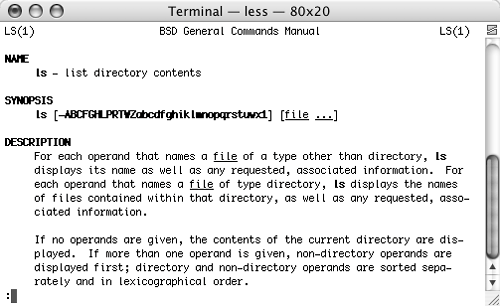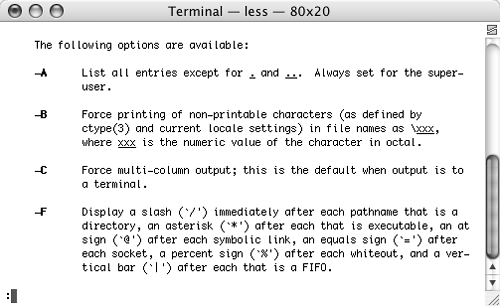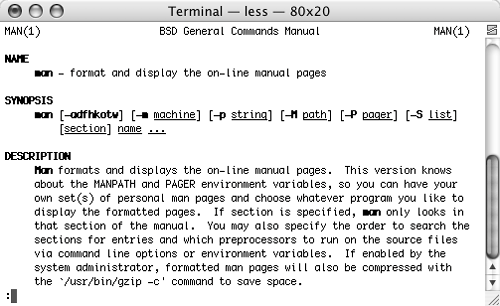Viewing man pages
| One important Unix command tells you everything you ever wanted to know about Unix commands and files: the man command. It displays information about commands and files documented in the on-line manual pages. These man pages are included with every version of Unix. The man pages present information about a command one page at a time. You can use keystrokes to advance to the next line or page of the man pages. You must quit the man pages feature to enter other Unix commands. Like a book, man pages are broken into chapters called sections (Table 1). Each section is designed for a specific type of user. For example, a programmer will be interested in different man pages than a user or a system administrator. There are some man pages that document identical sounding items yet are intended for different users.
To view man pages for a commandType man followed by the name of the command (for example, man ls), and press The first page of the reference manual for the command appears (Figure 8). Figure 8. The first man page for the ls command.
To view the next line of a man pagePress The manual advances one line. To view the next pagePress The manual advances one page (Figure 9). Figure 9. The second page for the ls command.
To quit man pagesPress Terminal returns you to the shell prompt. To get man pages for manType man man and press The first page of the reference manual for the online manual appears (Figure 10). Figure 10. The first man page for man.
|
EAN: 2147483647
Pages: 301
 Tip
Tip

